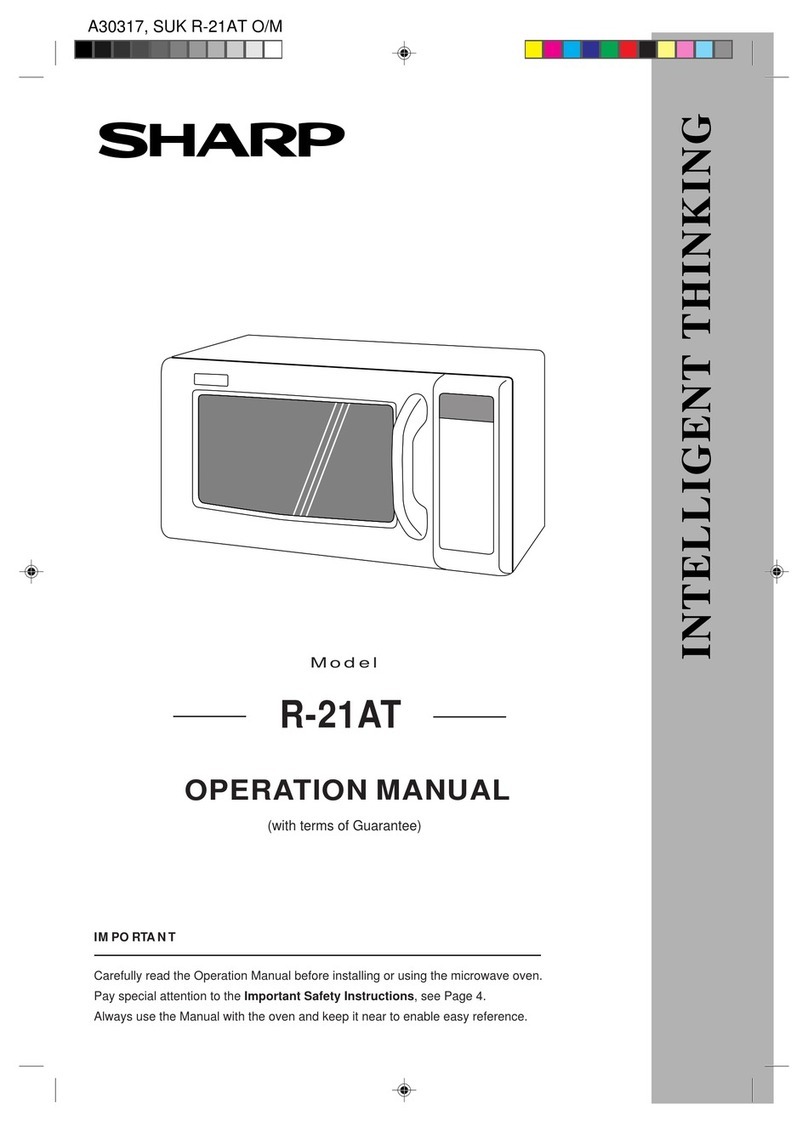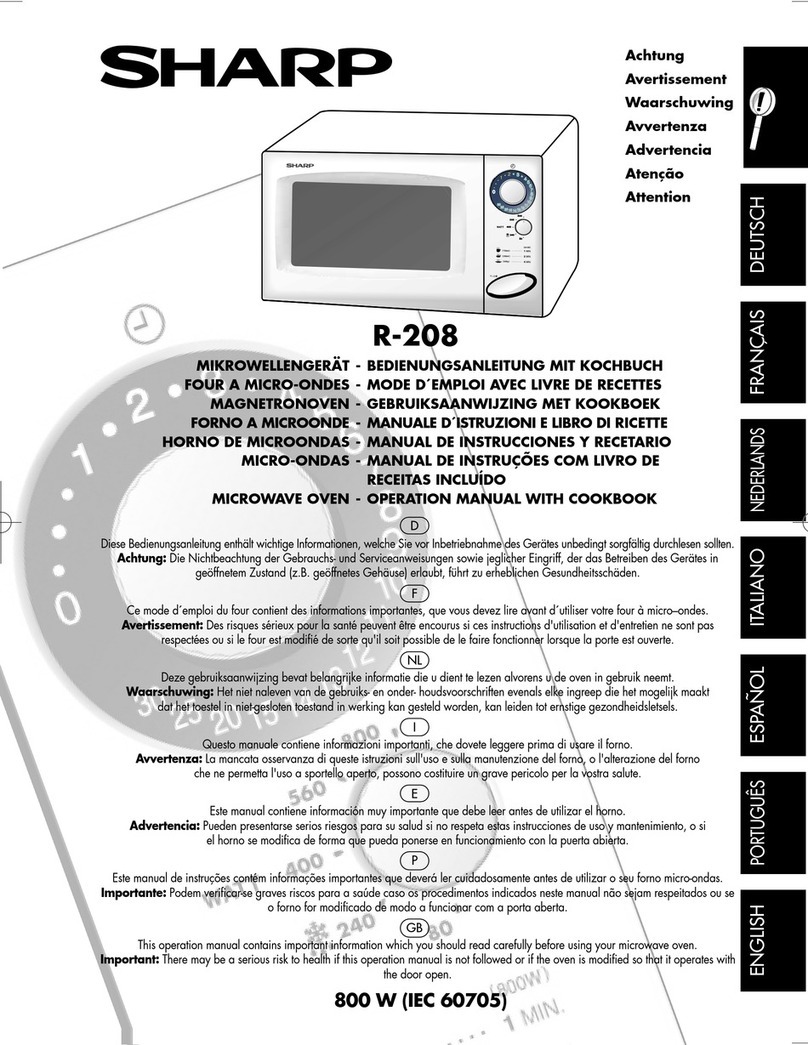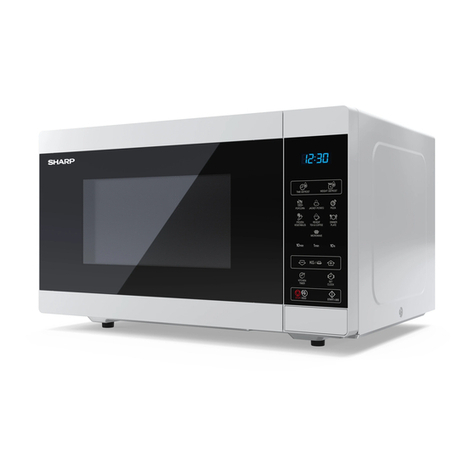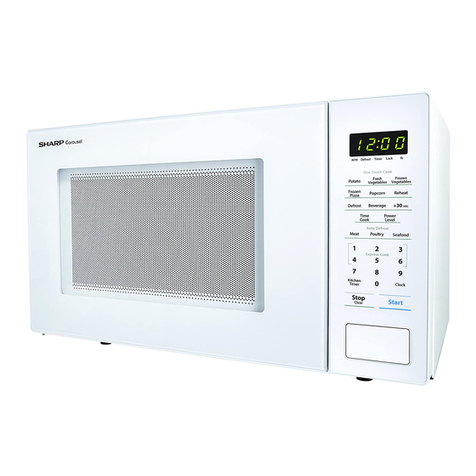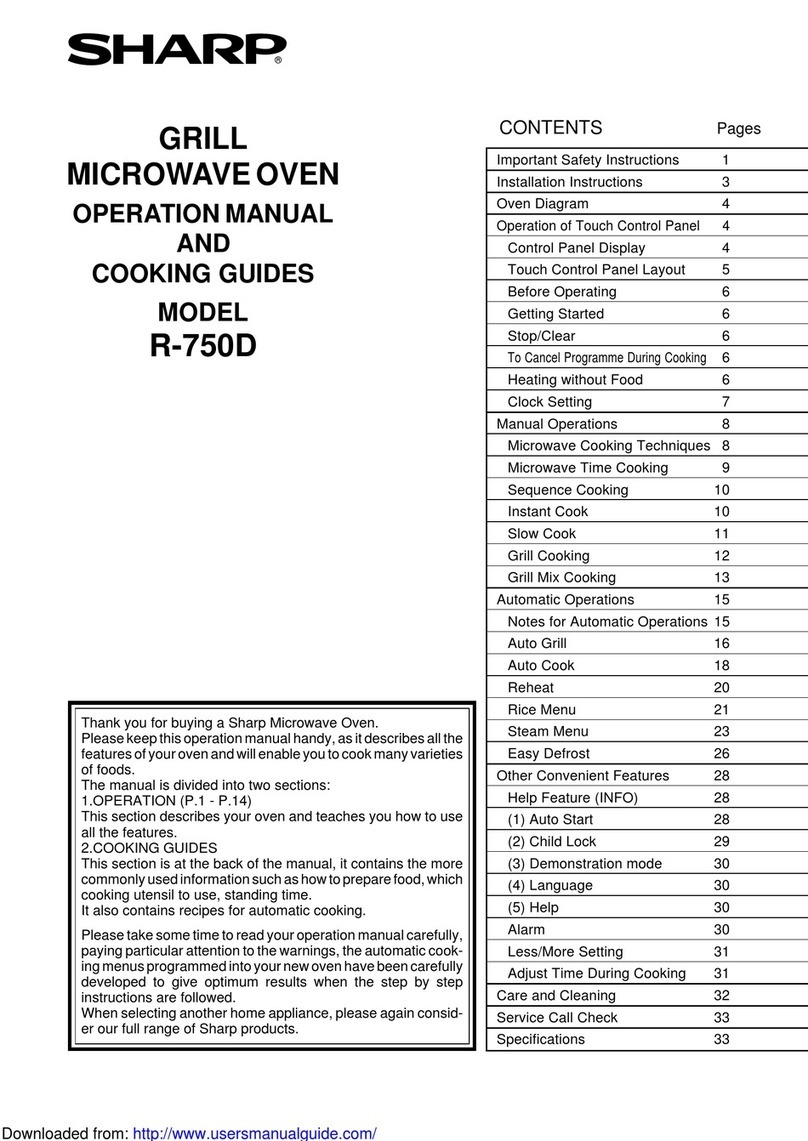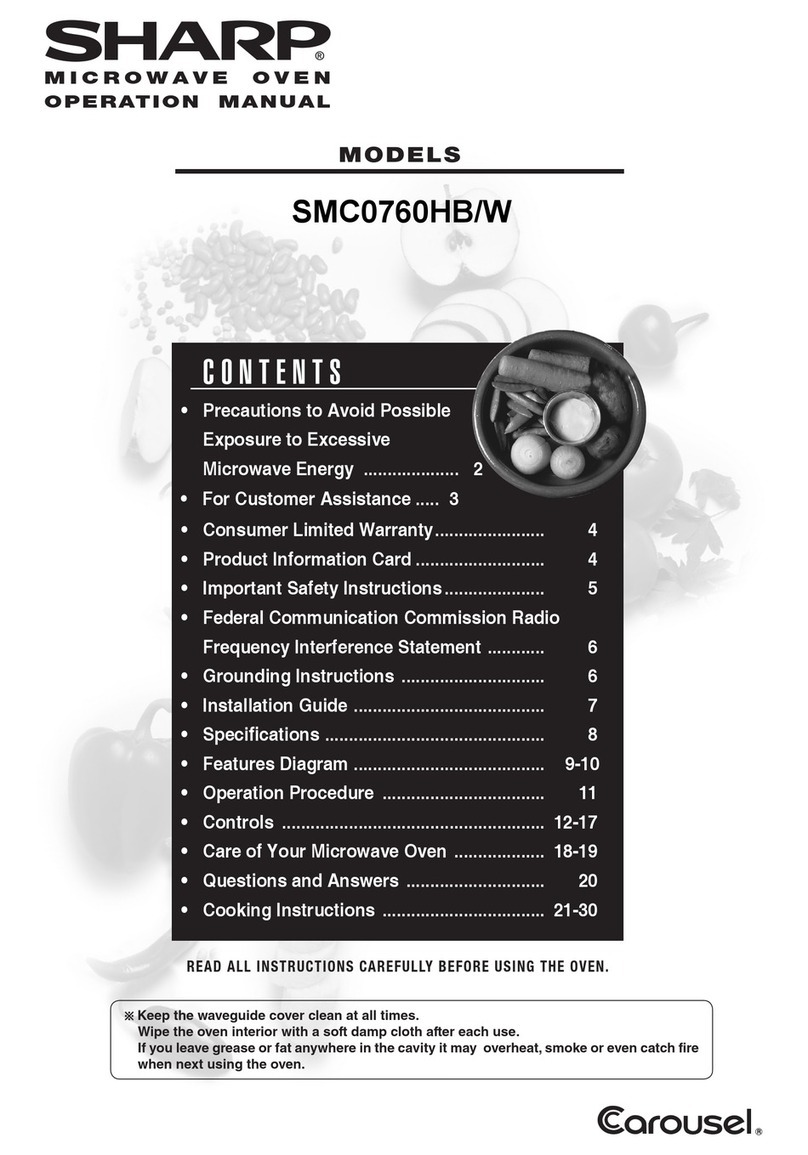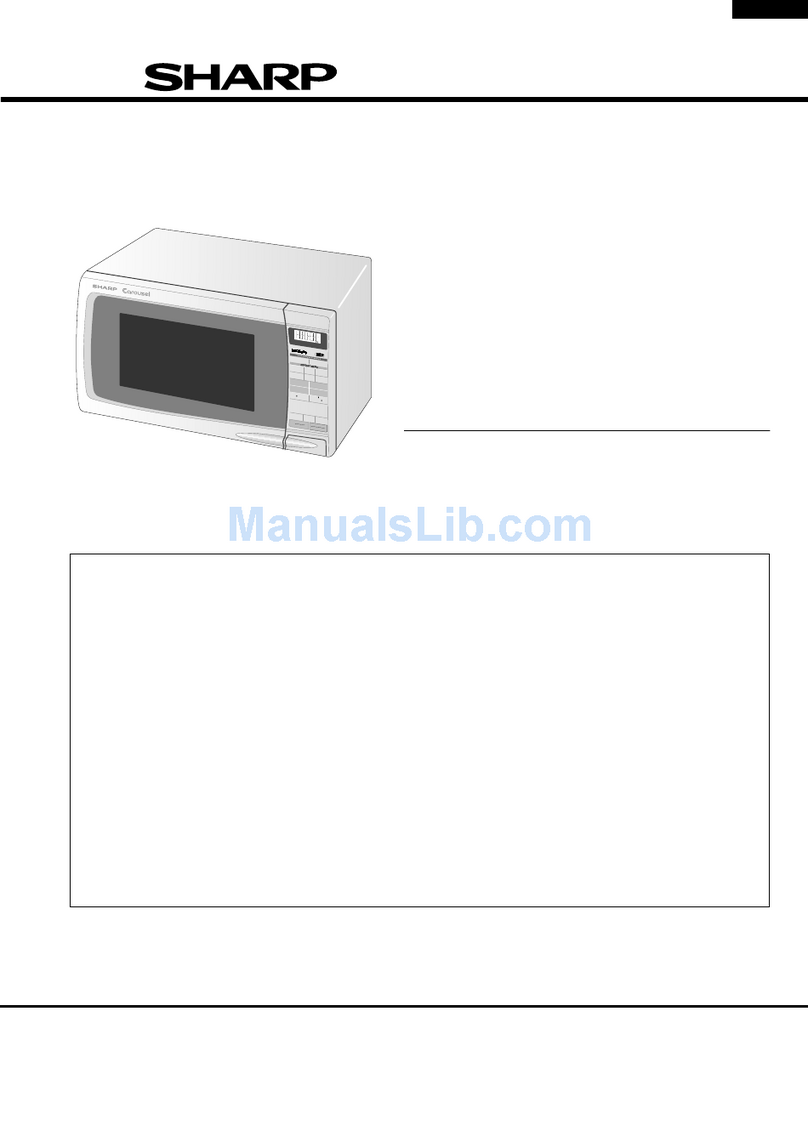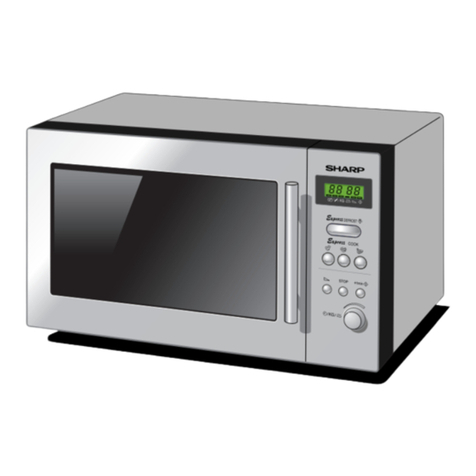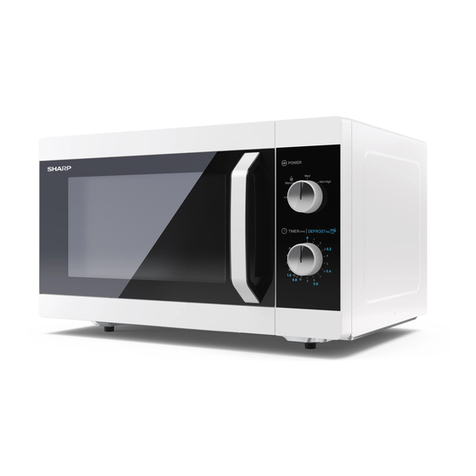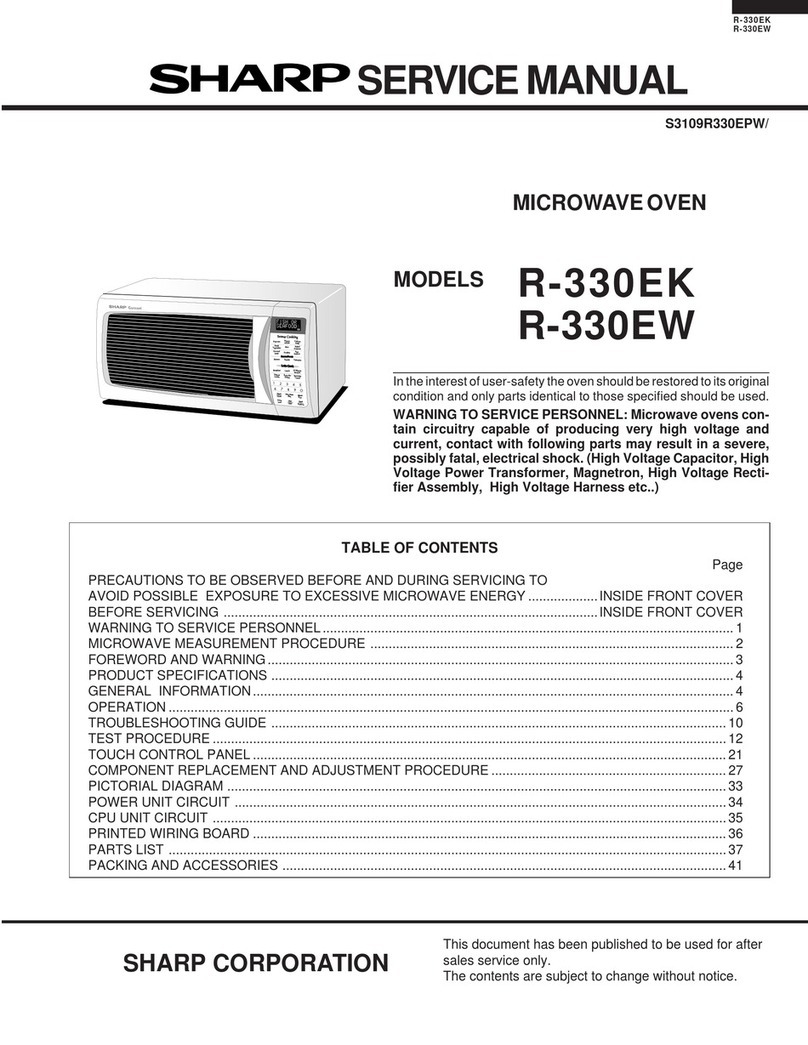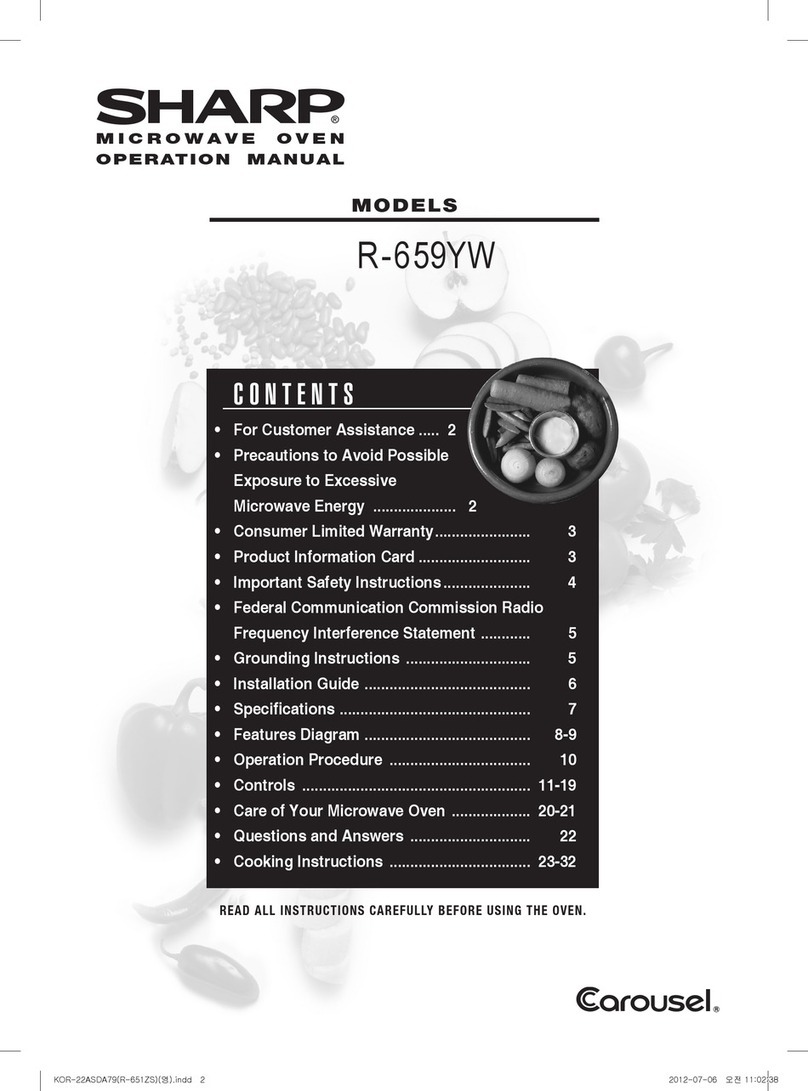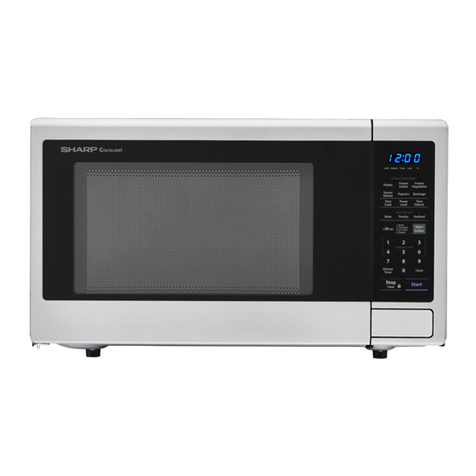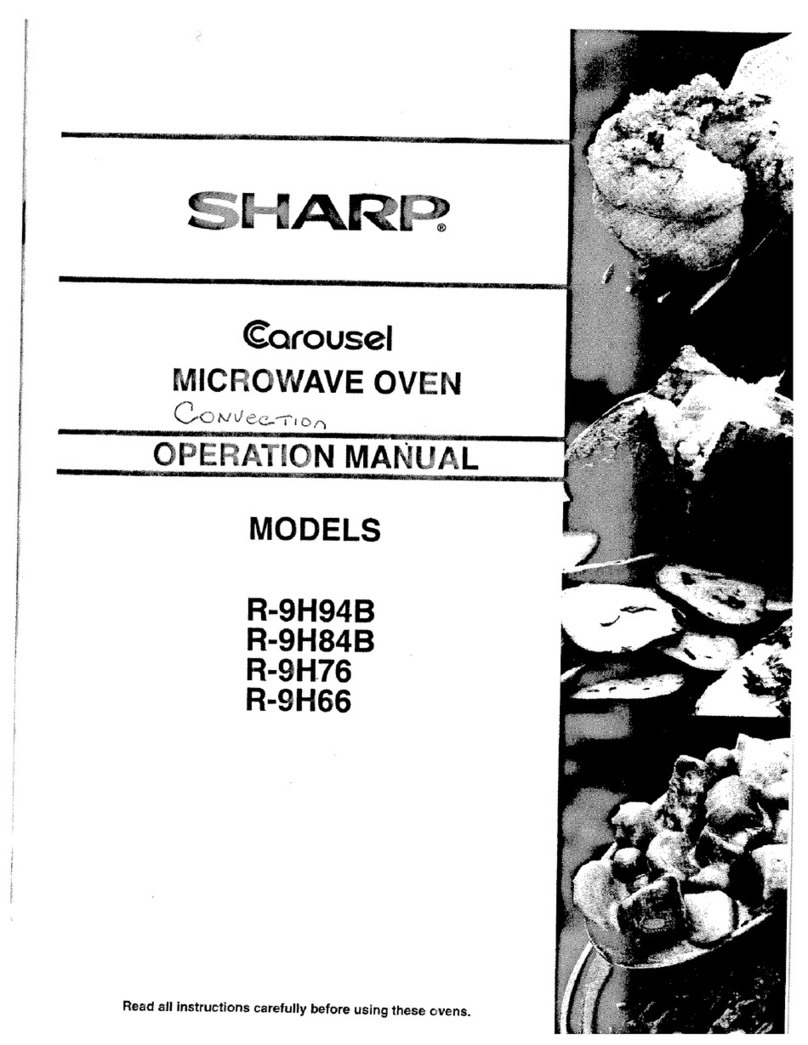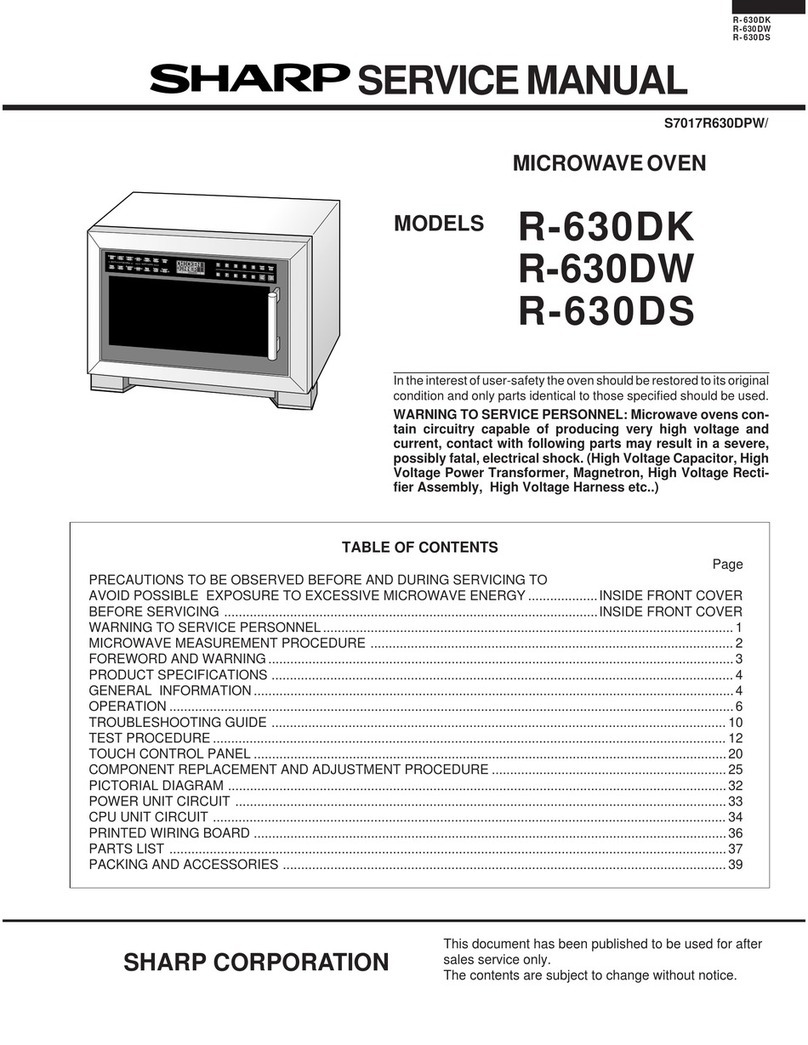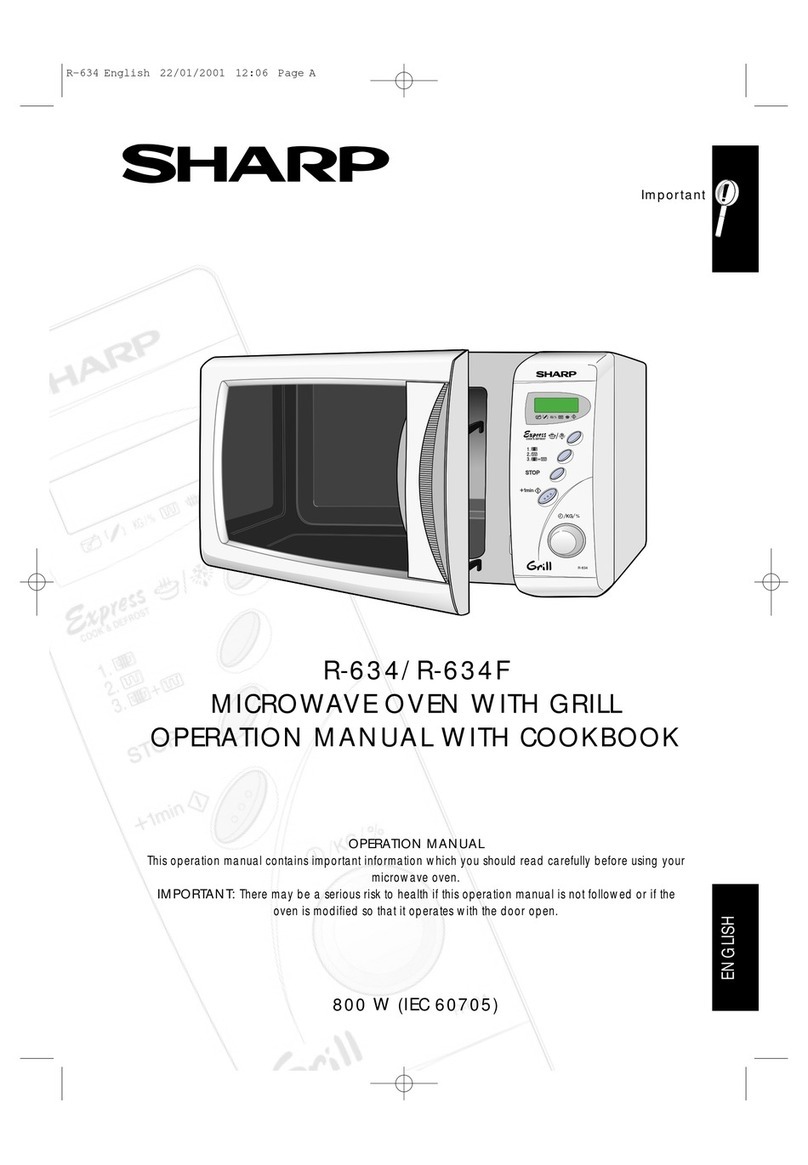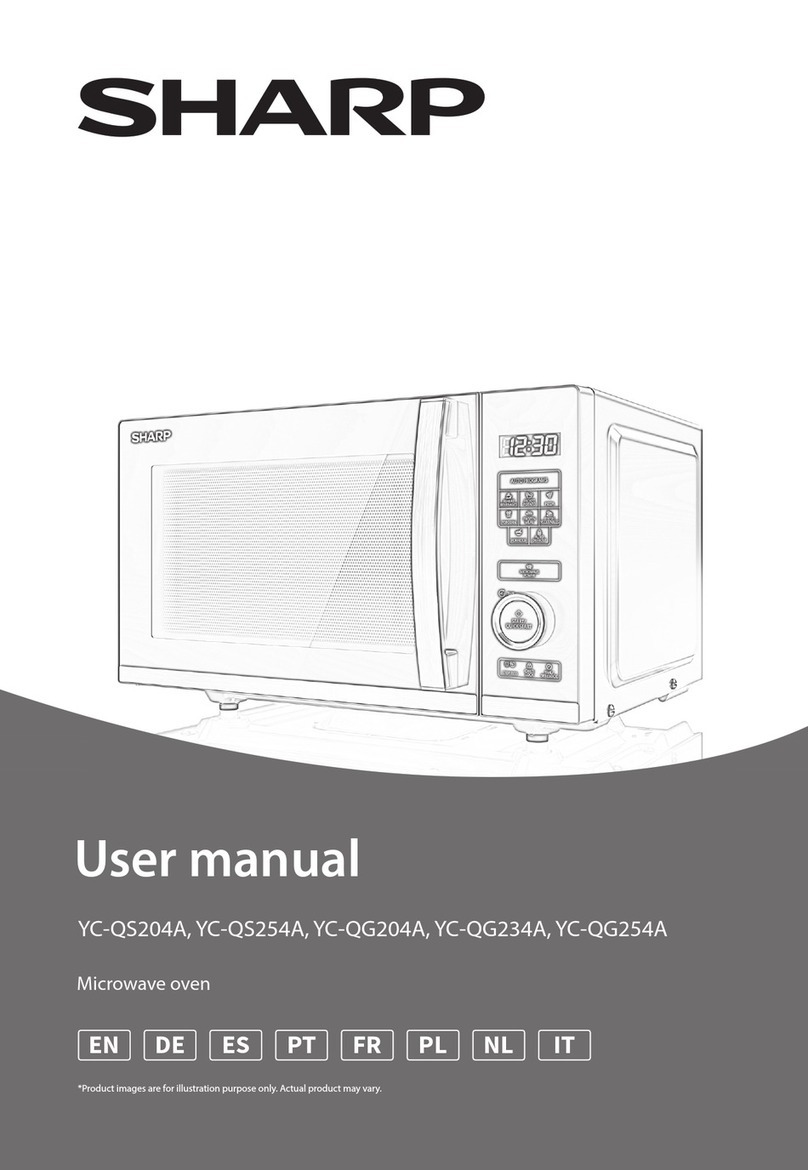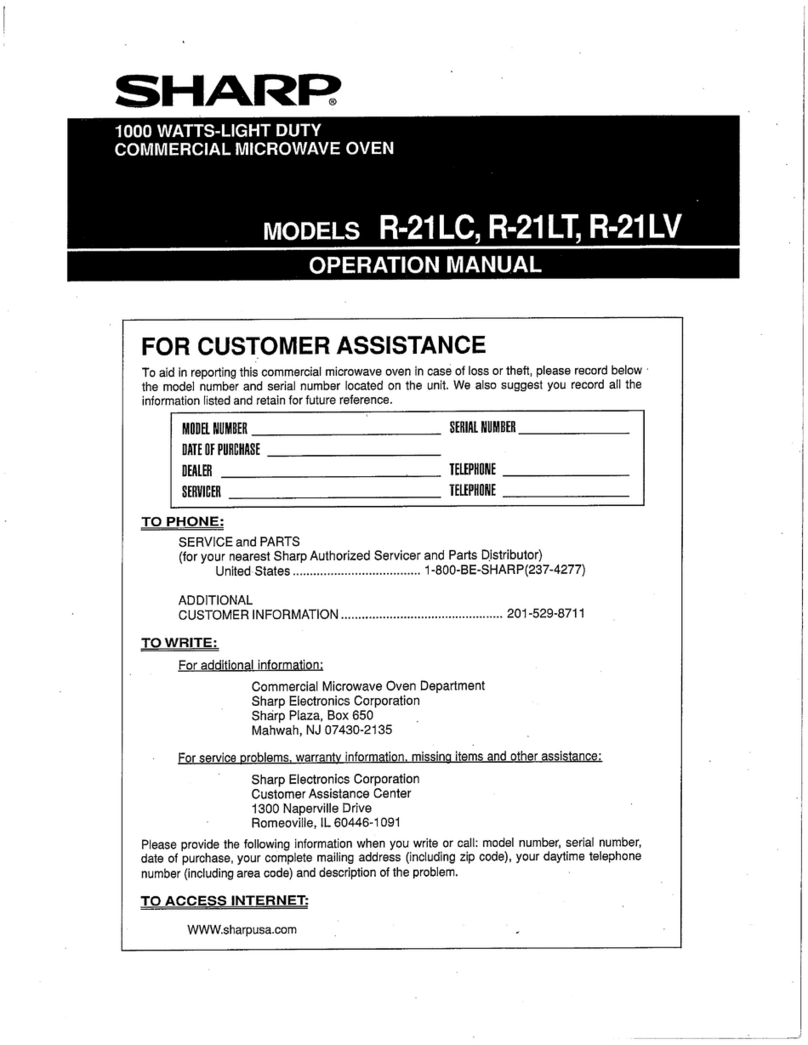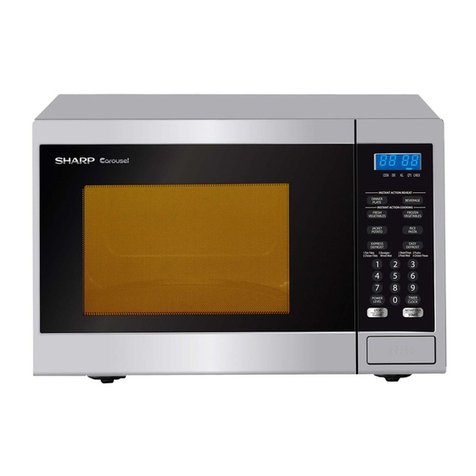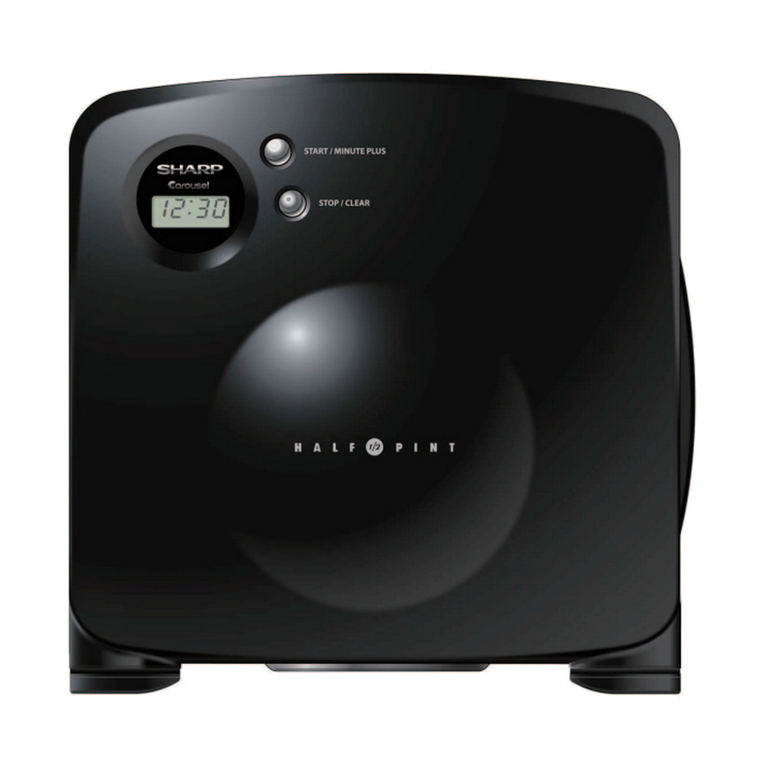R-9X55
CONVECTION COOKING CONDITION
PREHEATING CONDITION
Program desired convection temperature by touching
the CONVECTION pad and the temp. pad. When the
START pad is touched, the following operations occur:
1. The coil of shut-off relays RYI +RY5+RY6 are
energizedthe oven lamp, cooling fan motor. turn-
table motor and convection motor are turned on.
2. The coil of relay (RY4) is energized by the CPU unit.
The damper is moved to the closed position open-
ing the damper switch contacts. The opening of the
damper switch contacts sends a signal to the LSI on
the CPU unit de-energizing the relay (RY4) and
opening the circuit to the damper motor.
3. The coil of heater relay (RY3) is energized by the
CPU unit and the main supply voltage is added to
the convection heater.
4. When the oven temperature reaches the selected
preheat temperature, the following operations occur:
4-1. The heater relay (RY3) is de-energized by the
CPU unit temperature circuit and thermistcr, operr-
ing the circuit to the convection heater.
4-2. The oven wiil continue to function for 15 minutes.
turning the convection heater on and off. as
needed to maintain the selected preheat tempera-
ture. The oven will shut-down completely after 15
minutes.
CONVECTION COOKING CONDITION
When the preheat temperature is reached, a beep sig-
nal will sound indicating that the holding temperature
has been reached in the oven cavity. Open the door and
place the food to be cooked in the oven. Program de-
sired cooking time and convection temperature by
touching the number pad, CONVECTION pad and
Temperature pad. When the START pad is touched,
the following operations occur:
1.
2.
3.
4.
5.
The numbers of the digital readout start the count
down to zero.
The oven lamp, turntable motor, cooling fan motor
and convection motor are energized.
Heater relay (RY3) is energized (if the cavity tem-
perature is lower than the selected temperature) and
the main supply voltage is applied to the convection
heater to return to the selected cooking temperature.
Upon completion of the cooking time, the audible
signal will sound, and oven lamp, turntable motor,
cooling fan motor and convection motor are de-ener-
gized. At the end of the convection cycle, if the cavity
air temperature is above 118°C the circuit to (RY6)
will be maintained (by the thermistor circuit) to con-
tinue operation of the cooling fan motor until the
temperature drops below 118°C at which time the
relay will be de-energized, turning off the fan motor.
Relay (RY5) will however, open as soon as the con-
vection cycle has ended, turning off the convection
fan motor. This will now cool and allow the damper
door to open.
At the end of the convection cook cycle, shut-off re-
lay (RY4) is energized turning on the damper motor.
The damper is returned to the open position, closing the
damper switch contacts which send a signal to the control
unit, de-energizing shut-off relay (RY4).
MIX COOKING CONDITION
Program desired cooking time and temperature by Touching
the number pads and the LOW MIX’BAKE or !ilGH MIX
ROAST pad. When the START pad is touched, the following
operations occur:
1. The numbers of the digital readout start the count dcwn to
zero.
2. The shut-off relay (RYl i-RY%RYE) energized. iurr~ng or
the oven lamp. turntable motor. cocling fan moTor anti
convection motor.
3. The shut-off re!ay (RY4) is energrzec.
The damper door is closed from the open positicn
4. The heater relay (RYS; IS energized. addirx ?-2 -x:~c
stipply voltage to the convectron heater.
5. Now. the oven is in the convecticn cooking x~r:~r~cr
6. When the oven temperature reacnes t?e ~ete,::?~: ye’:-
perature. the following operations -c-p
“AdtAr
6-l. The power supply !/o!tagrs :s.adcec: :Z :?< :~;‘~~~~::;::r
heater a.pd power transformer ati?e-r~~:r?I
6-2. The ,convection heater operates :n:o:.,:r;r’ 7’;~ ,-?.;+z- r-
lay IRY3; ccntacts and tpe ;csyer :ra~~:cy--+- :~~:z;.: :
throuah the cook ieiav PY2‘: con;acts
6-3. These are operated by the tspiL[ iJ”j’ ‘,P
L ;!LDj ‘, 3;1:---
nateiy within a 32 second time bass co? ,z:& ?e,::
and microwave energy.
The relationship between the convection sr;cJ ?-1;:‘;1i
j w,va+;;j
power operations are as follows.
Note: The ON and OFF time ratro does not eorresoond with
the percentage of microwave power. because appro:c.
2 seconds are needed for heating of the magnetrcn
filament. _SE-
_ ., -5>E.
--~~-. --~---~ ~~..._
_-
SAYE
/ ‘?SEC 20SEC
ON
iwcao / VICRCWAVE JOivFii
3FF i eiwciox 3:“.
ON
ccr.vEz- i.,
Note: During alternate MicrowaveConvection operation,
the convection heater is energized only if the cavity
temperature drops below the set temperature.
AUTOMATIC OPERATIONS
This microwave oven has 4 automatic operations as follows.
SENSOR INSTANT ACTION
REHEAT SENSOR
INTELLIGENT SENSOR
DFROST SENSOR
These operations work by using absolute humidity sensor or
weight sensor.
